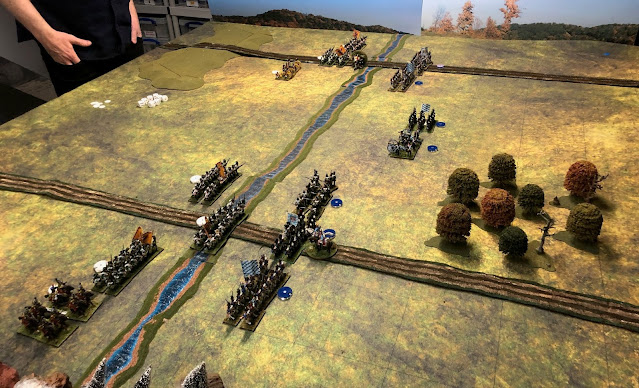My good freind, Jared Fishman, is the host of the 20 sided gamified podcast, which now has almost 100 recorded episodes. I often times listen to his episodes while I am painting, which has had a positive effect on productivity! Last month, Jared did an episode with Russ Lockwood, author of the Snappy Nappy rules, and
released the podcast a few days ago. I fed my narcissism by listening to it while painting some largely nekkid ancient Libyans, and found it fairly entertaining despite having been there, LOL. It largely concerns SN and our campaigns in a day events, which regular readers will be aware are all chronicled on the appropriate page of this blog. So if you are so inclined, check it out!
By the way, literally the second episode Jared produced was his interview with Brent Oman, author of the Field of Battle rules, You can find that episode
here. Brent just released his Battle Command : Ancients to Medieval, which I have to get onto the table later this Spring.
In the interim Jared, who now also lives in Litchfield county Connecticut, and I were discussing the game he recently ran using the Napoleonic Scenario book for Chris Pringle's Bloody Big Battles, namely Aspern-Essling, 1809. Following are some pictures he sent of the game, using his 15 mm Napoleonics.
The red stars are objectives, to right being the village of Aspern and the Gemende Au, and to the far left (stone walls, signifying the formidable granary there).Note the many markers on the Austrians; Jared tells me the French rolled a lot of boxcars for combat on the first turn (BBB uses 2 d6, with a 12 being the best possible roll - 1 chance in 36!).
Fierce combat at Aspern!
Essling was no neglected, either!
Run away! The colored pins denote which Corps the troops belong to.
Grenadiers, Angriff!
French Reinforcements!
Austrians press the attack on Aspern and the Gemende Au, threatening Napoleon's bridgehead over the Danube!
An island of blue in a sea of white!
The battle for Aspern rages on!
The Kaiserlicks seem to have lost interest in Essling.
The French retain conrol of Asopern!
Spent, the Austrians withdraw to lick their wounds. Napoleon has prevailed at Aspern-Essling! Kaiser Franz remains obstinate about negotiating for peace, however.


















































